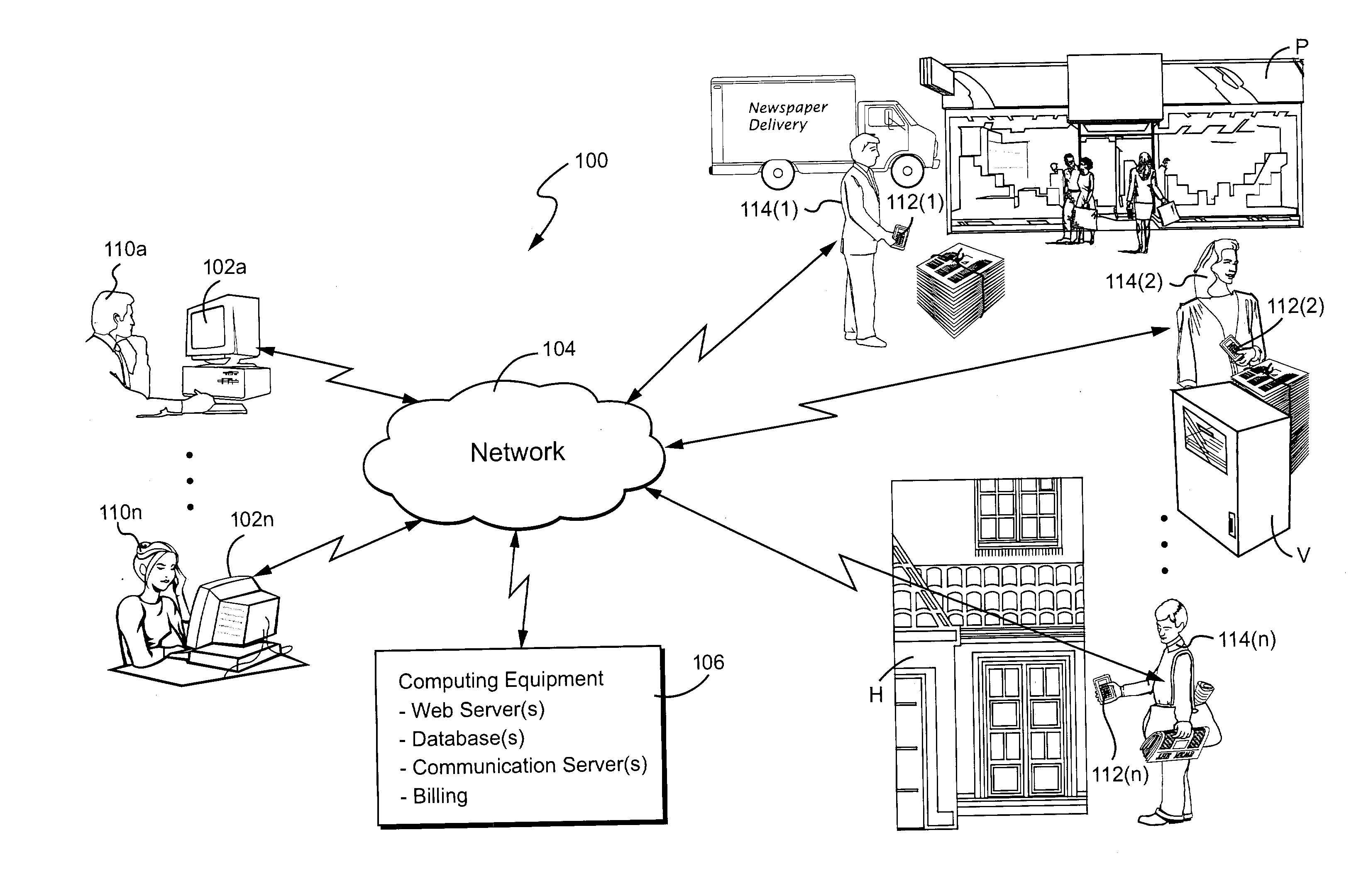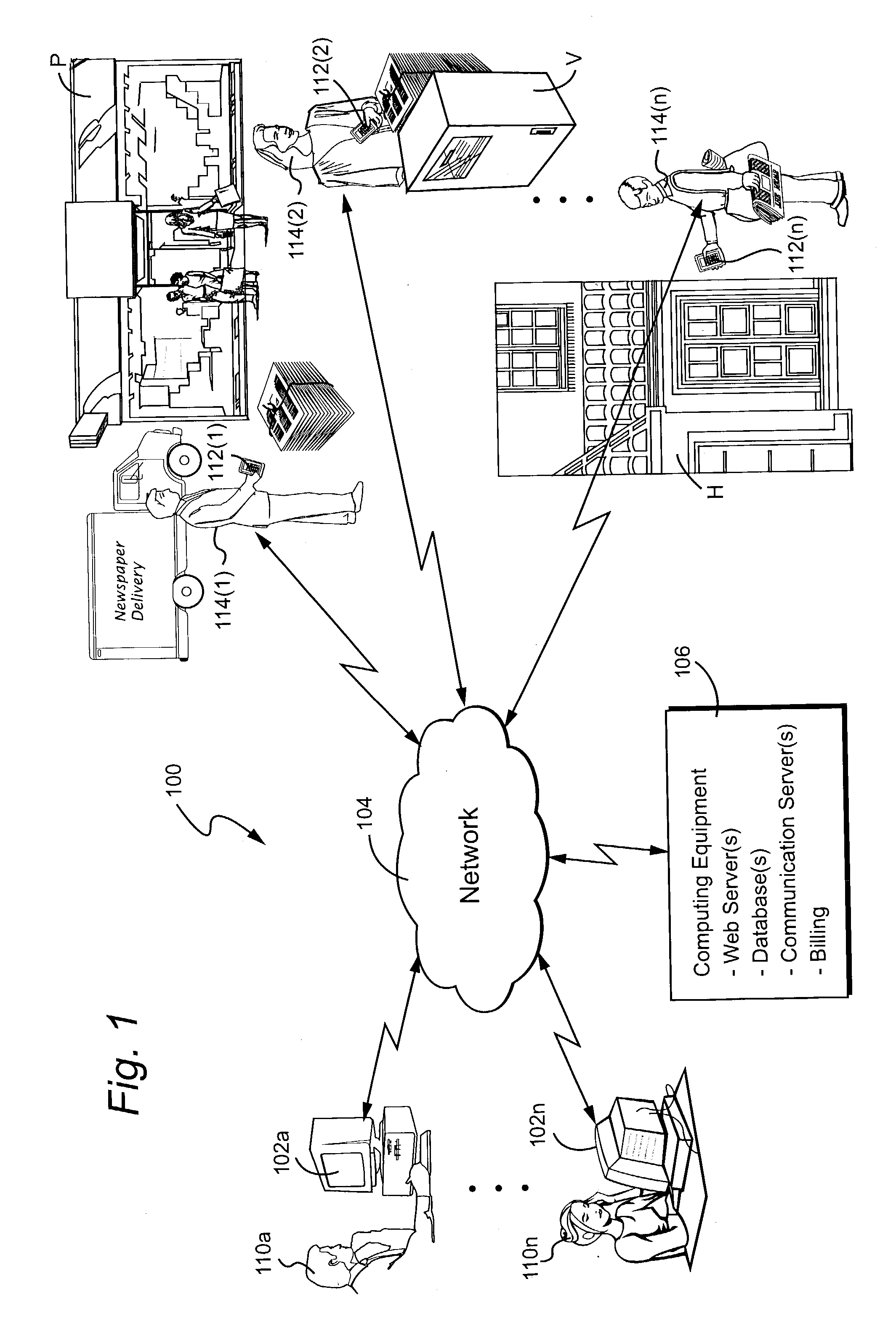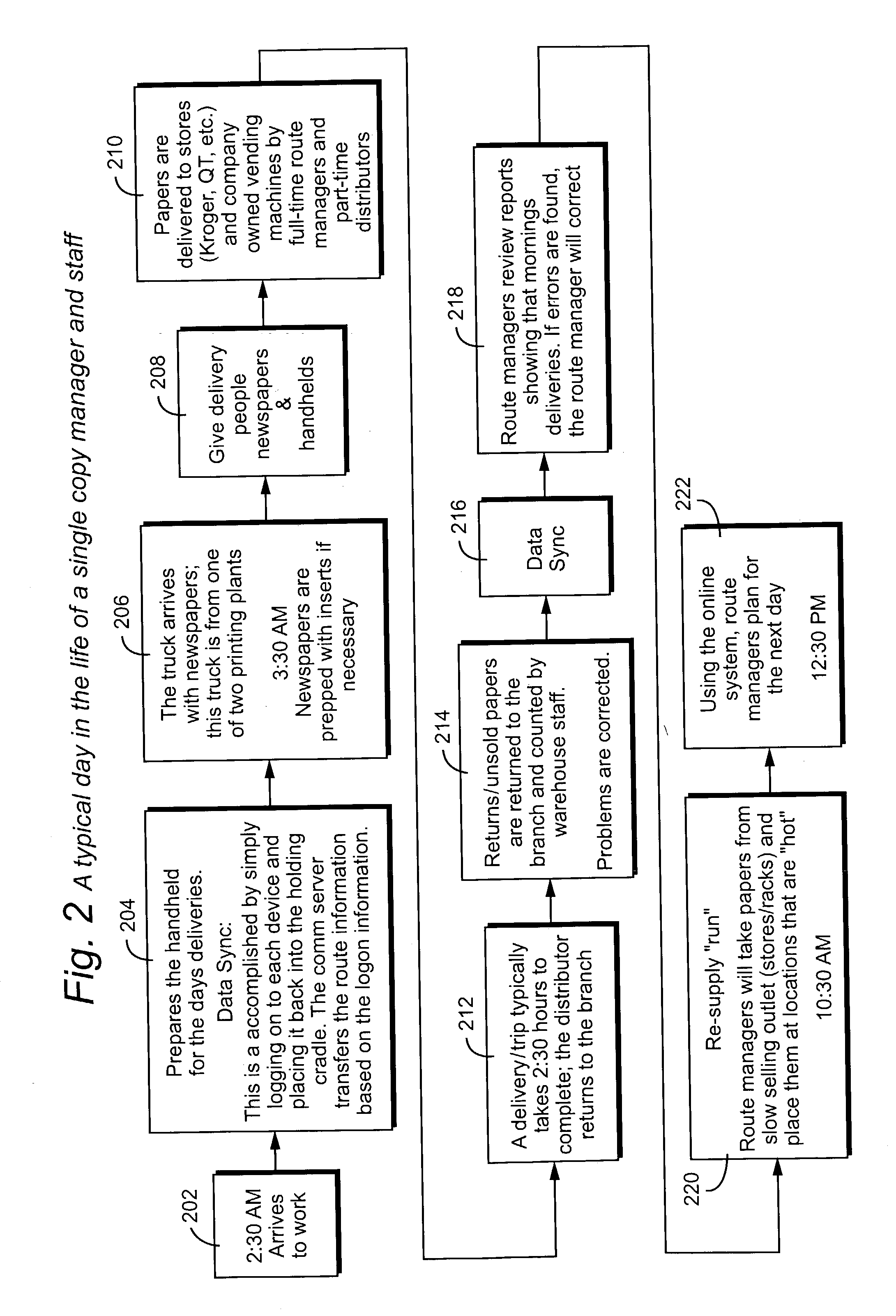Method and apparatus for supporting delivery, sale and billing of perishable and time-sensitive goods such as newspapers, periodicals and direct marketing and promotional materials
a technology for services, applied in the field of methods and equipment for supporting the delivery, sale and billing of perishable and time-sensitive goods, can solve the problems of resolution, convenience, cost-effectiveness and other advantages of printed copy that cannot be matched by practical present-day digital distribution techniques, and achieves the effect of increasing efficiency and flexibility
- Summary
- Abstract
- Description
- Claims
- Application Information
AI Technical Summary
Benefits of technology
Problems solved by technology
Method used
Image
Examples
example implementation
of Computing Equipment 106 and Handheld Devices 112
[0099] FIG. 3 is a schematic illustration of one illustrative example implementation of computing equipment 106. In the FIG. 3 illustrative implementation, computing equipment 106 includes:
[0100] a database server 302,
[0101] a communications server 304,
[0102] a circulation computer system 306, and
[0103] an application web server 310.
[0104] As illustrated in FIG. 3, route managers 110 access database server 302 via web enabled appliances such as, for example, personal computers or any other appliances having a display and a user input means. Appliances 102 can be connected to a local area network, the Internet, wireless networks, or by any other convenient means. Database server 302 works in conjunction with application web server 310 to provide a web-based user interface that permits route managers 110 to easily and conveniently input data into database 302 as well as to view raw or analyzed data on easy to understand user interface...
example databases
[0143] In the exemplary illustrative embodiment shown, system 100 maintains a variety of different databases. Some of these databases are stored on handheld devices 112, while others of these databases are stored on database server 302. The databases may in some cases be generated on database server 302 and fully or partially downloaded onto handheld devices 112. In other cases, databases are created on the handheld devices 112 and are subsequently uploaded to the database server 302. Because of reliability and other issues, it is typically desirable for database server 302 to "know" everything that each of handheld devices 112 "knows", but in certain applications there may be instances in which handheld devices 112 store data that is not necessarily uploaded to database server 302 (e.g., permanent programming, security data or the like).
[0144] One class of database maintained by system 100 is read only databases that should in general be present on each handheld device 112. Other t...
PUM
 Login to View More
Login to View More Abstract
Description
Claims
Application Information
 Login to View More
Login to View More - R&D
- Intellectual Property
- Life Sciences
- Materials
- Tech Scout
- Unparalleled Data Quality
- Higher Quality Content
- 60% Fewer Hallucinations
Browse by: Latest US Patents, China's latest patents, Technical Efficacy Thesaurus, Application Domain, Technology Topic, Popular Technical Reports.
© 2025 PatSnap. All rights reserved.Legal|Privacy policy|Modern Slavery Act Transparency Statement|Sitemap|About US| Contact US: help@patsnap.com



